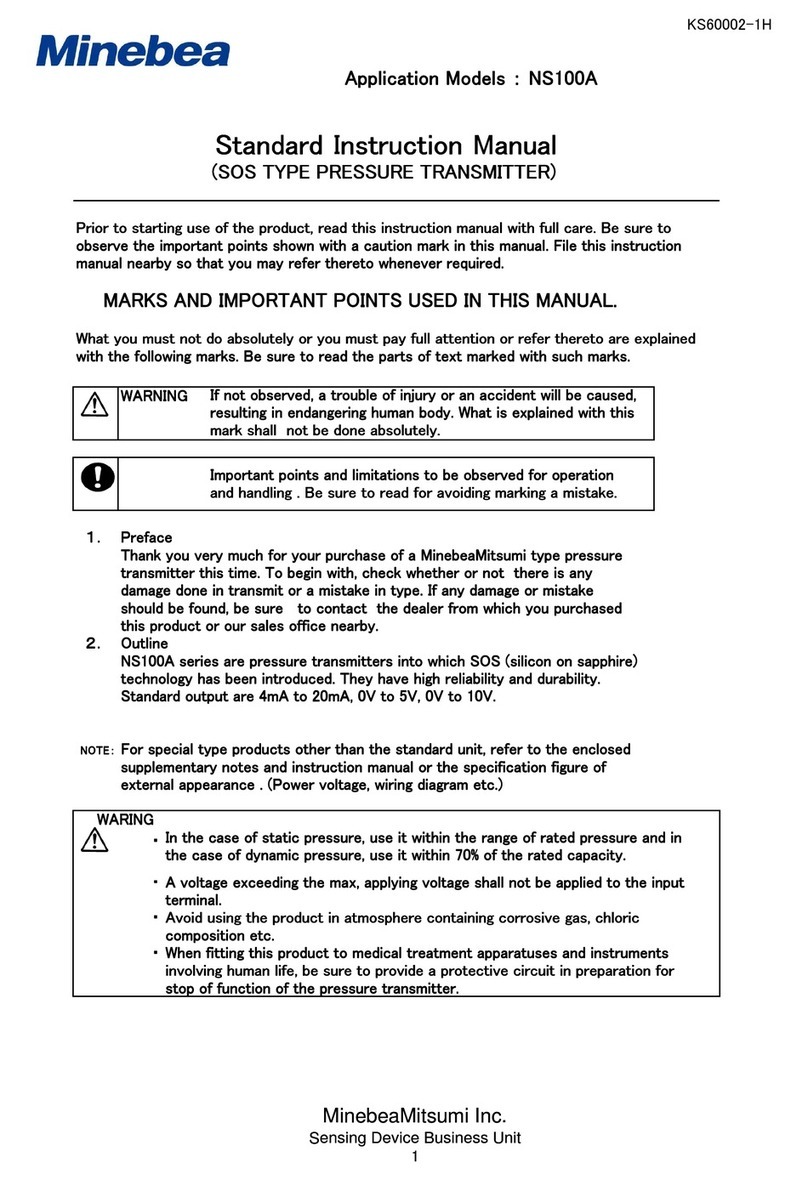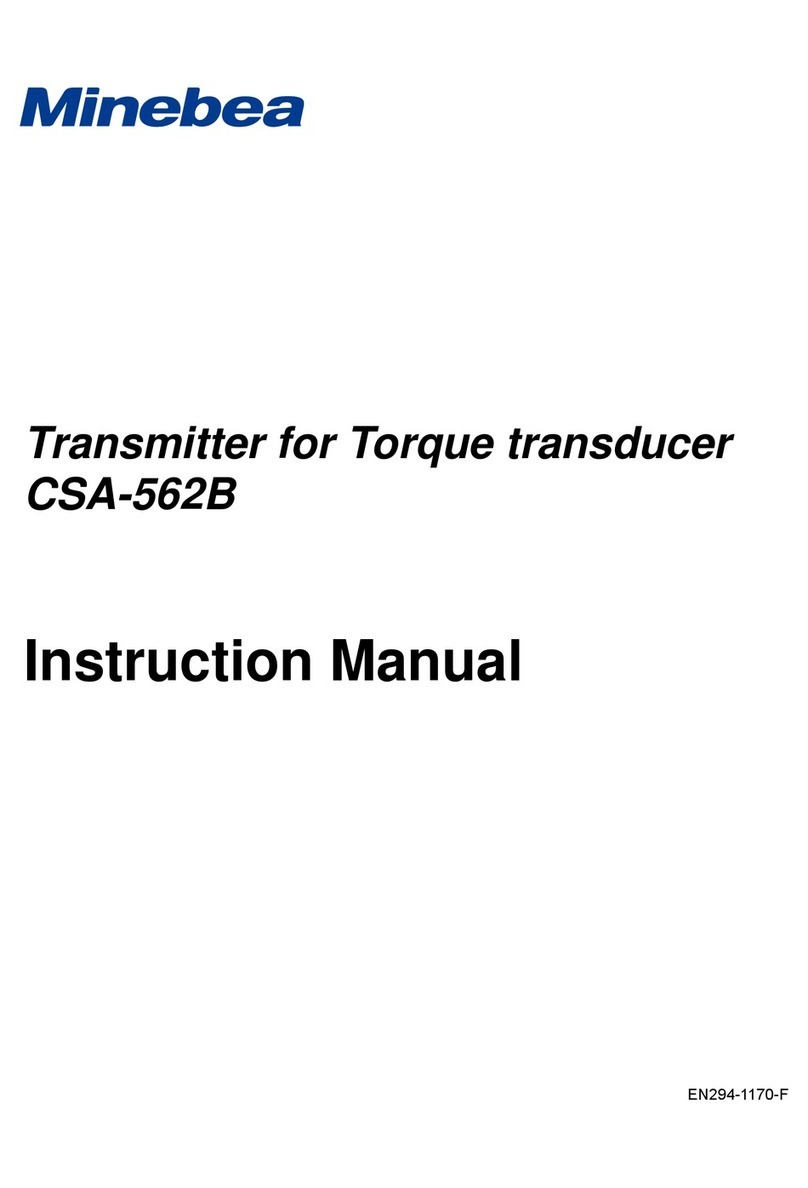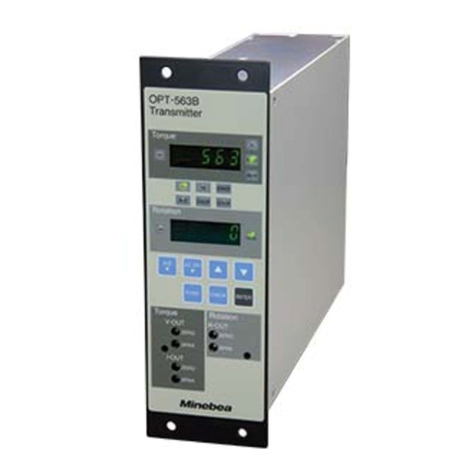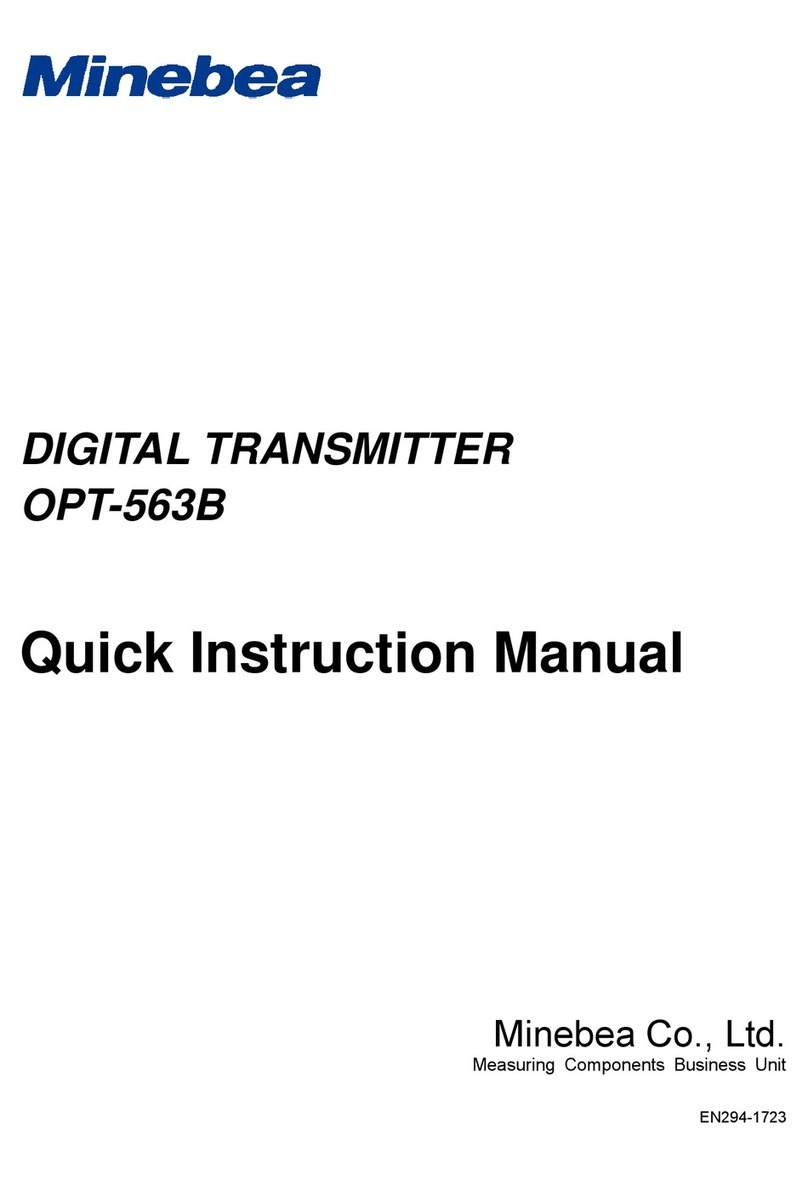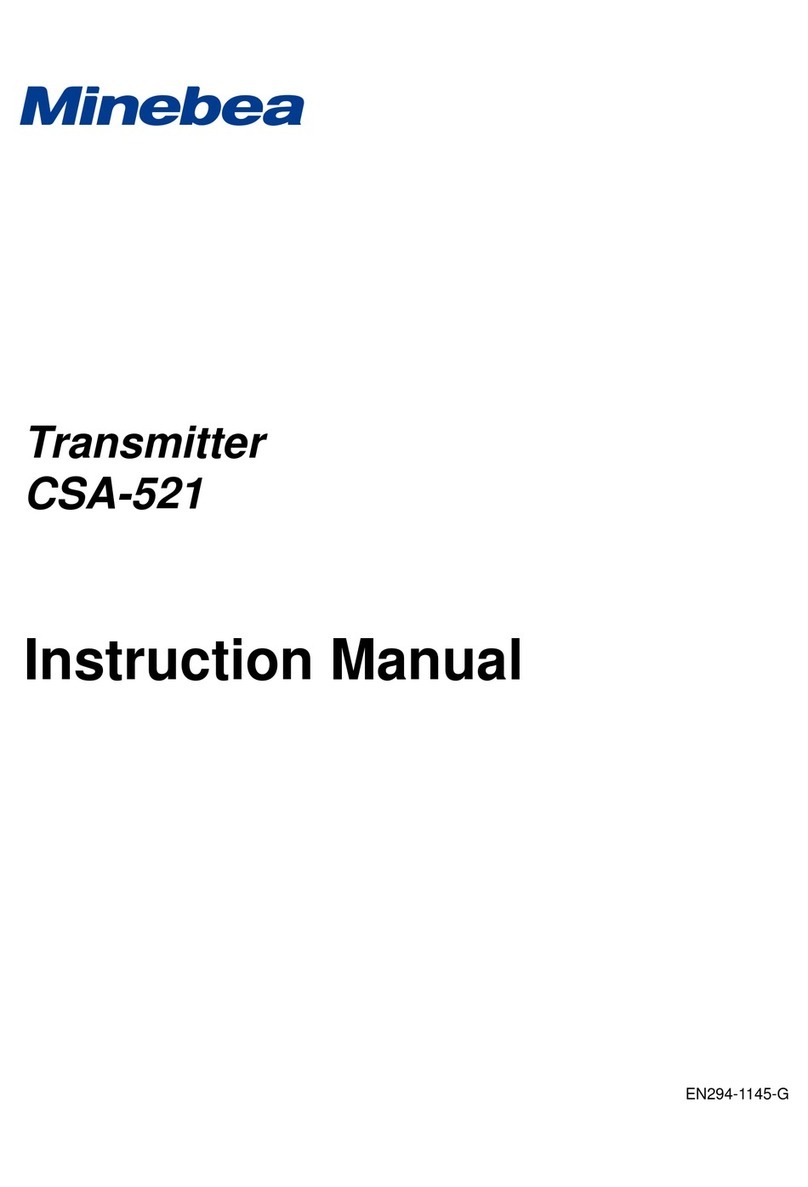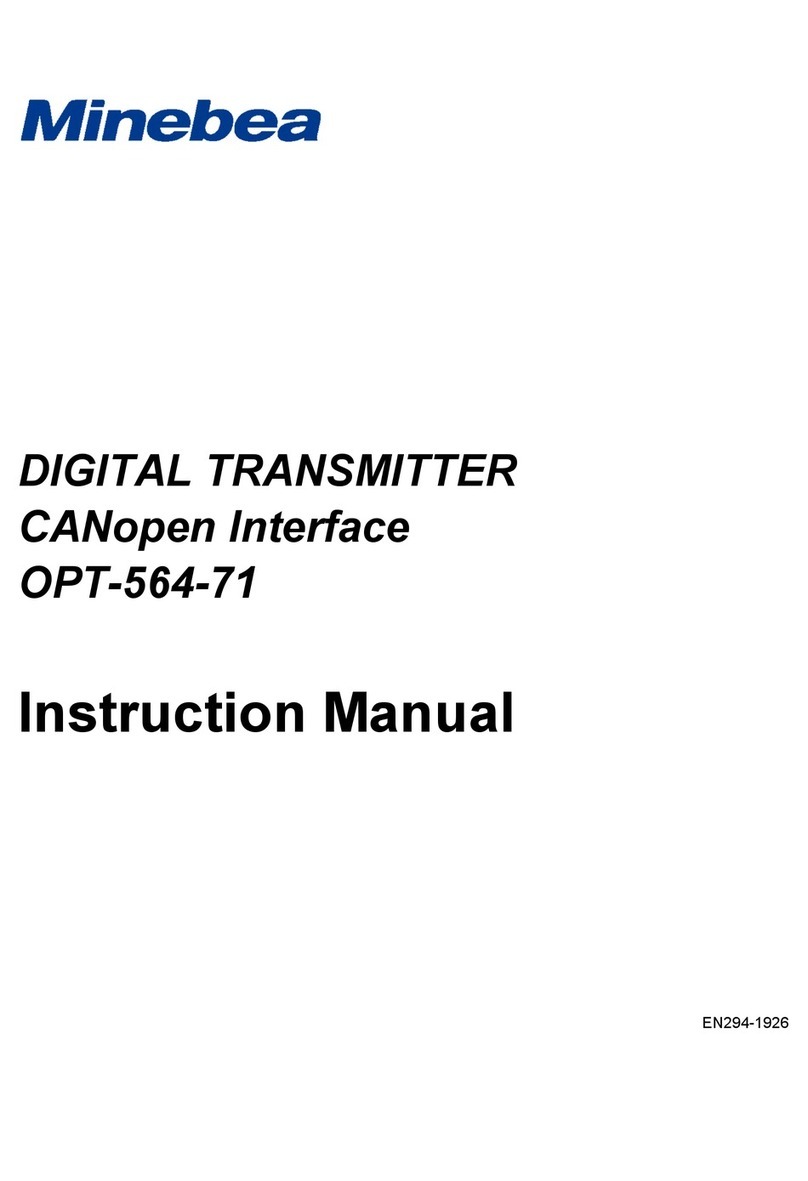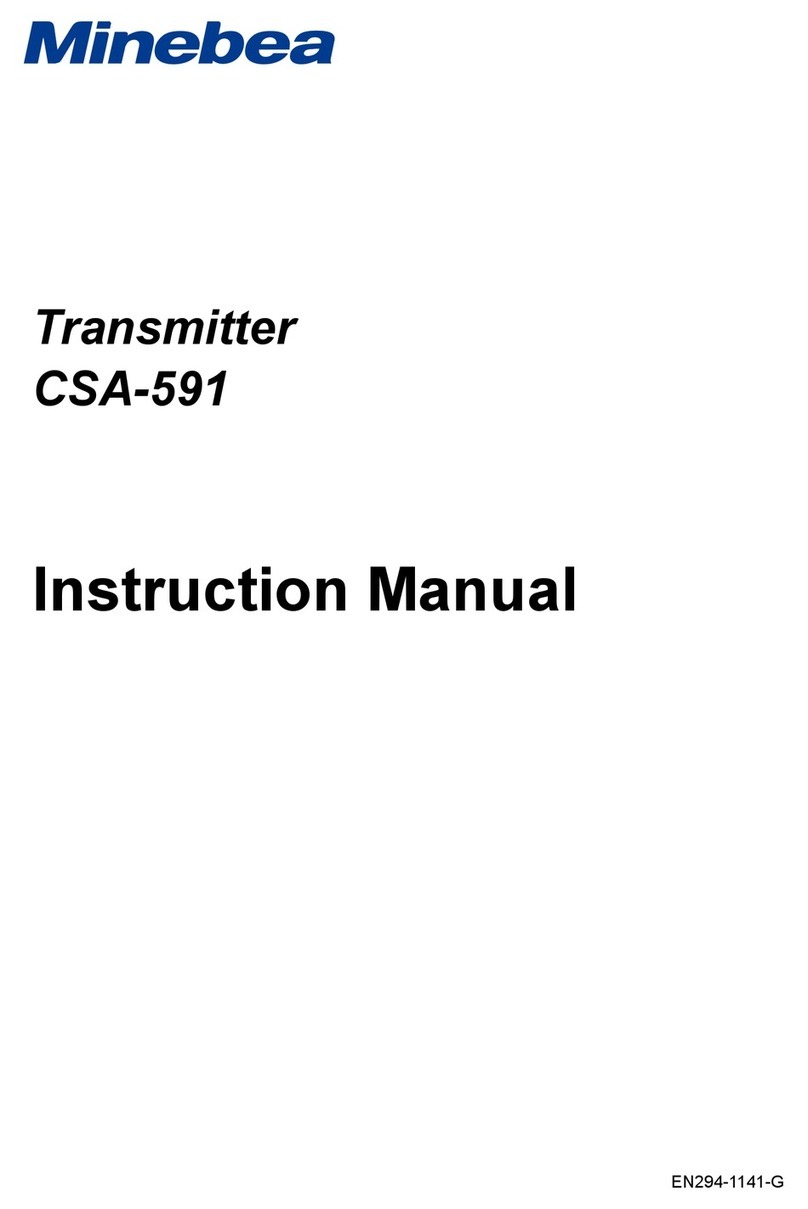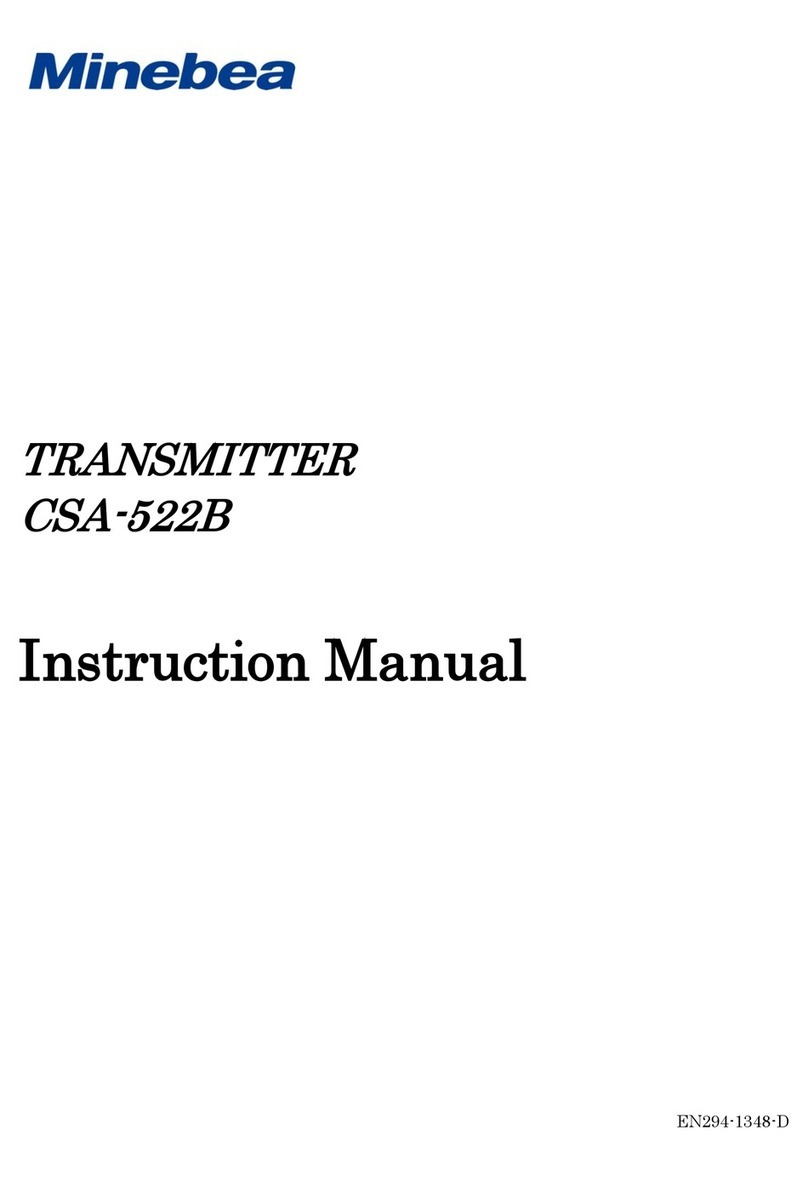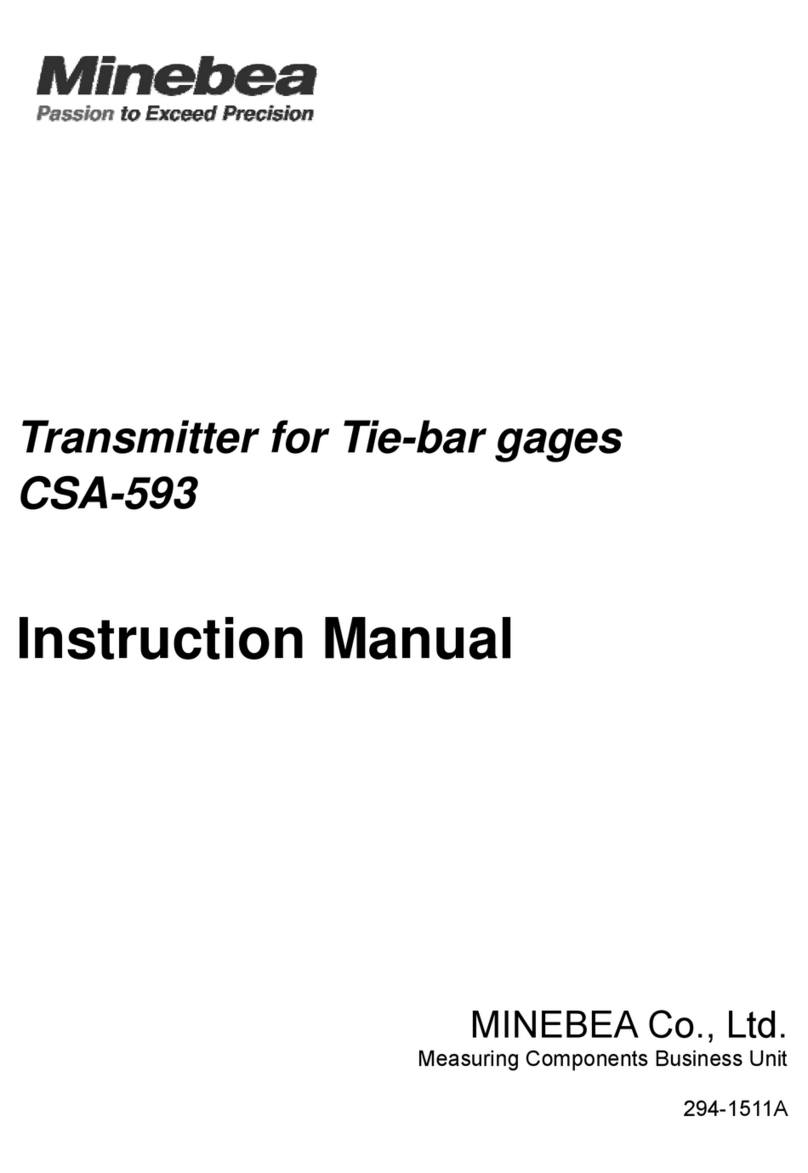
V
2. Power supply
Warning ●Be sure to check that power supply is off when installing each cable.
If the work is done with the power fed, there may have the possibility
of electric shock to the operator or even the possibility of destroying
the instrument.
●Before supplying the power, check that the indication of power supply
voltage/specifications for the instrument and the power going to
supply should be the same. If they are not equal, contact us.
If you use the instrument without checking them, it may cause a
damage in the instrument or electric shock to the operator.
●Grounding wire should be connected securely. When grounding wire
is not connected, it may cause a malfunction of the instrument or
electric shock to the operator.
3. Application note
Warning ●Before using a new instrument or exchanging the strain gage applied
transducer for a new one, be sure to make calibration.
If calibration shall not be made, correct measured results may not be
obtained nor it may cause a malfunction in the instrument and there
may exist damage in peripheral equipments.
Besides, even though calibration had been made, there may occur the
similar case when the result is not correct, so make calibration again.
Warning ●In case of using the instrument, check that the connections are
executed properly. If not connected properly, correct measured result
will not be obtained, nor it may cause malfunctions of the instrument,
damage to the peripheral equipments or even worse serious accidents.
Warning ●When change of setting is made carelessly on the instrument during
measurement, it may cause malfunction in the instrument and also
possibility of damage in peripheral equipments.
